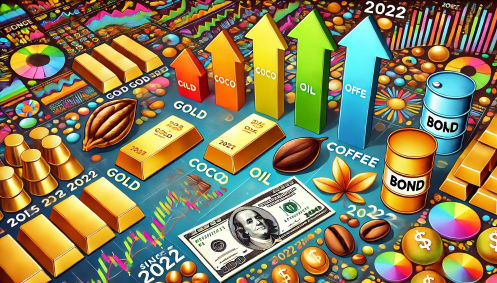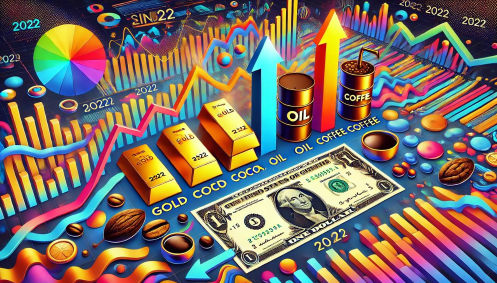
Since 2022, the commodity market has observed some notable trends with several commodities experiencing price increases while others have seen declines. Notably, gold, cocoa, oil, and coffee have all trended higher, reflecting various market dynamics and supply constraints. Conversely, bond prices have trended lower in response to rising interest rates and inflationary pressures, reducing their attractiveness as fixed-income investments.
An interesting case is the Japanese yen (JPY), which, although a currency, often behaves similarly to a commodity due to Japan’s heavy reliance on imported energy and raw materials. As such, its value can be influenced by changes in commodity prices, making it a unique instrument to analyze in the context of commodity trends.
Gold has maintained its status as a safe haven amid economic uncertainty, with prices rising as investors look to hedge against inflation and currency devaluation. Political tensions and economic instability have also played a role in driving investors towards gold, pushing its prices upward.
Cocoa and coffee have seen their prices go up mainly due to supply chain disruptions and climatic impacts on production. Cocoa has been particularly affected by political instability in major producing countries, while extreme weather conditions have impacted coffee crops in critical regions like Brazil, leading to a significant uptick in prices due to fears of a supply shortfall.

Oil prices have surged as global demand recovers post-pandemic, coupled with controlled production by major oil-producing nations. This controlled supply meeting a resurgence in demand has naturally led to higher prices, reflecting the classic economic scenario of rising prices under tight supply conditions.
In contrast, the bond market has experienced a downtrend, influenced by expectations of higher interest rates, which typically lead to lower bond prices. Investors tend to move away from bonds as the return on riskier assets becomes more attractive when rates rise, contributing to the downward pressure on bond prices.
The behavior of the Japanese yen has mirrored these commodity trends to some extent. Traditionally seen as a safe haven during times of market stress, the yen has faced downward pressure due to Japan’s extensive need for imports. As commodity prices rise, the cost of these imports increases, negatively impacting Japan’s trade balance and, by extension, the value of its currency.
Traders utilize both technical and fundamental analysis to navigate these trends. Technical analysis provides insights through charts and historical data, helping identify patterns and potential price movements. On the other hand, fundamental analysis looks at external factors like economic indicators, weather conditions, political stability, and other relevant data to predict changes in supply and demand that may affect prices.

For example, a technical analyst might use charts to determine the resistance and support levels of gold prices, while a fundamental analyst would consider global economic uncertainties or central bank policies that could influence investor behavior towards gold. Similarly, for commodities like cocoa and coffee, a fundamental approach would assess weather impact reports and political developments in producing countries, whereas technical tools could help pinpoint trading opportunities based on market sentiment and price trends.